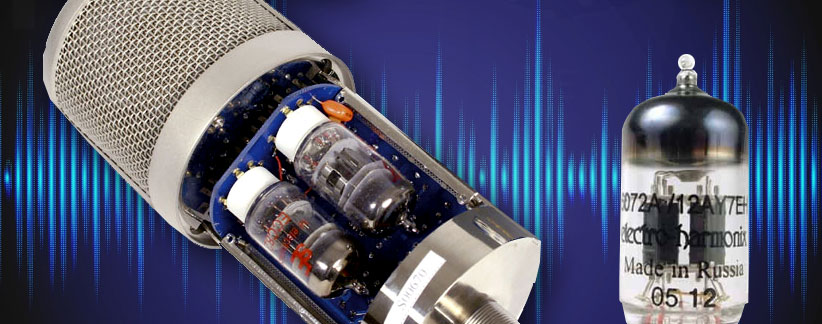You might’ve heard about tube microphones if you’ve worked in music or audio. Many individuals who belong to this industry are unaware of a tube mic. Almost all of them would also never know how these microphones work. Any active microphone that uses a vacuum tube as its impedance converter is a tube microphone.
The capsule signals pass through various components in these mics, including a tube. This produces a certain output signal. This article discusses tube microphones and vacuum tubes in brief. So, let’s begin with the tube microphone.
How tube microphones work
Any microphone with a vacuum tube in its design is a tube microphone. Nothing can get more straightforward than this. The vacuum tube acts as an amplifier and an impedance converter for the signal of the mic. The condenser capsules in tube mics produce audio signals of low amplitude with a higher impedance.
The vacuum tube boosts this signal effectively while reducing the impedance. This causes the signal to travel with the rest of the components inside the mic. It finally travels through the output connection. The requirements of power are relatively higher for vacuum tubes.
To supply the required amount of power, tube microphones come with external units of power supply. These mics are often large-diaphragm condensers. You’ll also come across ribbon tube microphones and small-diaphragm tube condensers in the market.
Vacuum tube
The other terms used for a vacuum tube are ‘valve’ and ‘electron tube. This electronic device controls the current flow with a vacuum between electrodes. This happens with the application of a voltage to it. Microphone vacuum tubes have an outer container. The material of this container is either ceramic or glass. This container has a vacuum inside, where there is no air. There must be no oxygen present within the tube.
This is because the presence of oxygen might burn up the device. The electrodes located inside the tube cause electrons to flow. This produces an electric current. The 20th century saw the invention of the diode. A diode is the simplest vacuum tube. It has two most important electrodes, namely the anode and the cathode.
Cathode is the negative terminal, while anode is the positive terminal. Power supply directly heats the cathode. Indirect heating of the cathode is also possible. Upon applying heat to the tube, the cathode starts emitting electrons. Owing to the negative charge in the electrons, the cathode repels them. The positively charged anode attracts the electrons.
The application of the right power heats the vacuum tube. This generates the electric current. One thing to note here is that the tube has to be a vacuum. If it’s not, the oxygen within the tube would cause the heater to burn up. If this happens, the vacuum tube won’t function.
A tube microphone has a basic vacuum tube. The term for this vacuum tube is ‘Triode’. All the triodes have a third electrode, which connects to the microphone’s capsule. The term for the third electrode is ‘the grid’. Another term used for this third electrode is the ‘control grid’.

